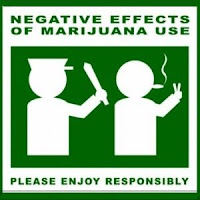One manager said those who reached out for help following a personal crisis "disappeared" back into a self-destructive lifestyle when services were not available.
The centres have long waiting lists and lament at not being able to fund their own detox facilities so addicts can move seamlessly from detox to rehabilitation.
Rehabilitation centres will take addicts only when they are clean of drugs.
Michael Barrett, chief executive of Transformations rehabilitation centre in Surfers Paradise, said the lack of detox facilities on the Gold Coast was a "huge issue".
"The government answer to crime and drug users has been harm minimisation and increased policing but the jails keep getting fuller," he said. "They need to partner with us.
"The Government doesn't have any rehab programs."
Queensland Health shut down a detox facility on the Coast, at Fairhaven, three years ago to build a $1.5 billion hospital that has no such facilities.
Drug addicts now travel to Brisbane or Mt Tamborine to get clean but sometimes wait weeks for a bed. Then they must get on a weeks or months-long waiting list for a rehab bed.
The Courier-Mail contacted three of the five drug rehabilitation centres in Logan and the Gold Coast and all complained of a lack of government support for criminals trying to get off drugs.
It costs Transformations $50 a day to rehabilitate clients - a third of the cost of a prison cell.
Goldbridge Rehabilitation Services manager Charlie Blatch said his centre was "chock-a-block" and there was a list of people waiting. People needing help to break the drug-crime cycle were "slipping through the cracks".
"We need more help for people who are desperately looking for it," he said.
"We are trying to increase capacity but we need the help of the Government and the community."

Many addicts are bouncing between jail and hospitals.
Mr Barrett said clients had to be mentally rewired and emotionally repaired, not just kept off drugs.
"You have to work from the inside out - we look at the social aspects, the psychology, the biology of the problem. It has to be a multi-faceted approach," he said.
The rehab program is part boot camp, part charity. Clients clean graffiti, mow grass for the elderly and do other good deeds while they receive therapy and learn to take care of themselves in homes with other former addicts.
People in rehabilitation have a strong bond, challenging each other to stay with the program and showing each other that someone cares.
Dave Warby, the manager of Logan House, said hundreds of people, especially parents with addictions, could not get help when they needed it because there were no beds.
"We have a waiting list for all our clients, not just mandated (drug court) clients," he said.
That was a shame, because when criminals with drug addictions hit a crisis and reached out for help, there was only a small "window of opportunity" to reach them, he said.
"There really need to be options for people when they put up their hands for help. It needs to be made available."
Queensland Health said inpatient drug withdrawal services were available at all public hospitals "if clinically required".
"Patients who present at any major emergency department can be provided with detoxification services," a spokesman said.
Queensland Health said it contributed $20 million a year towards community residential rehab beds. It declined to say whether it planned to add new detox or rehab facilities, or fund additional detox facilities.
12 October, 2011
Tuck Thompson
The Courier-Mail
No comments:
Post a Comment